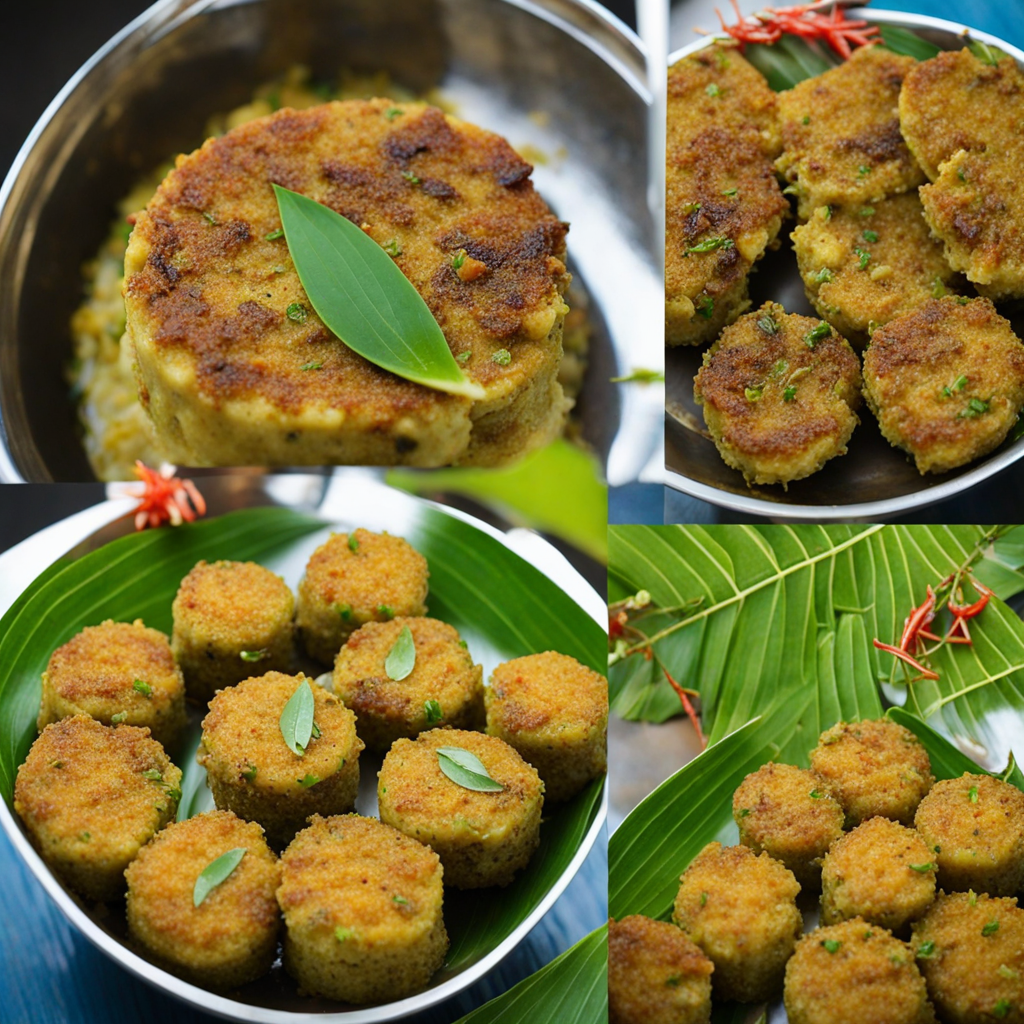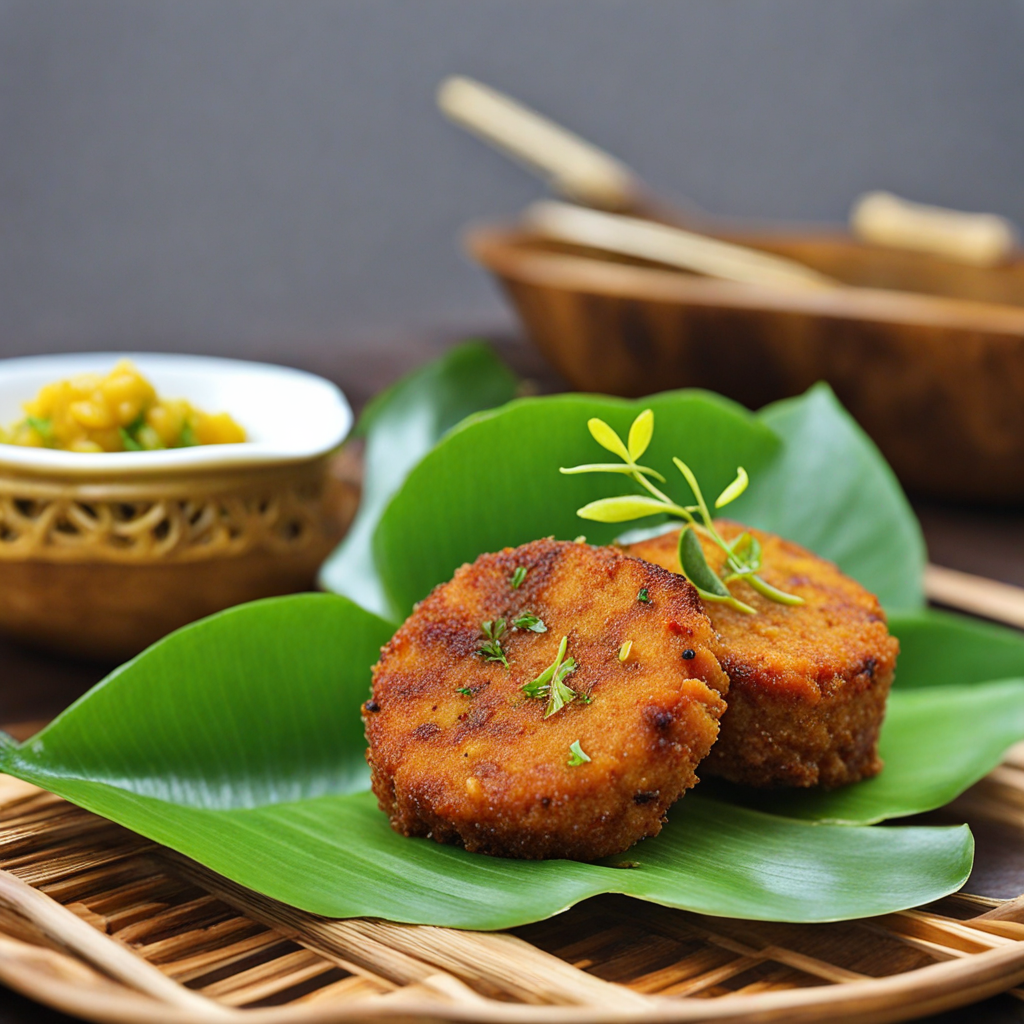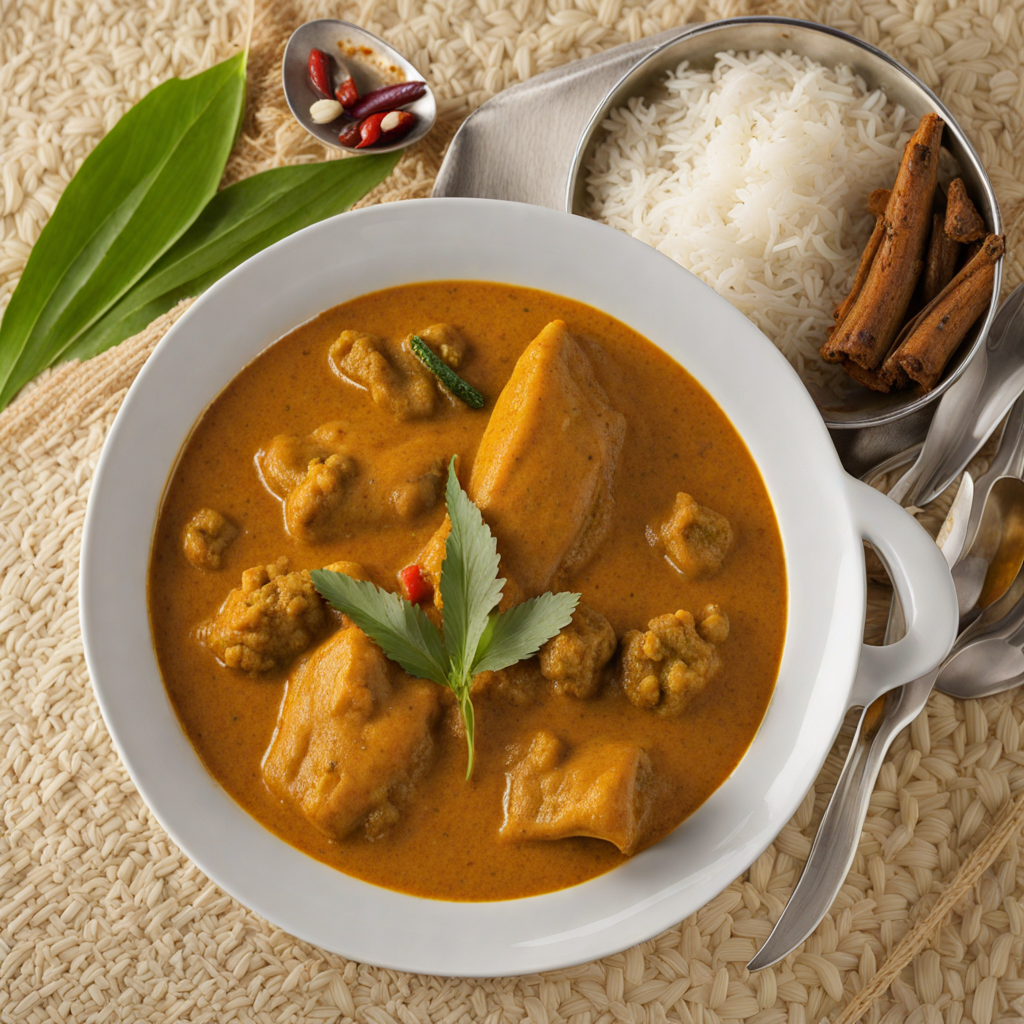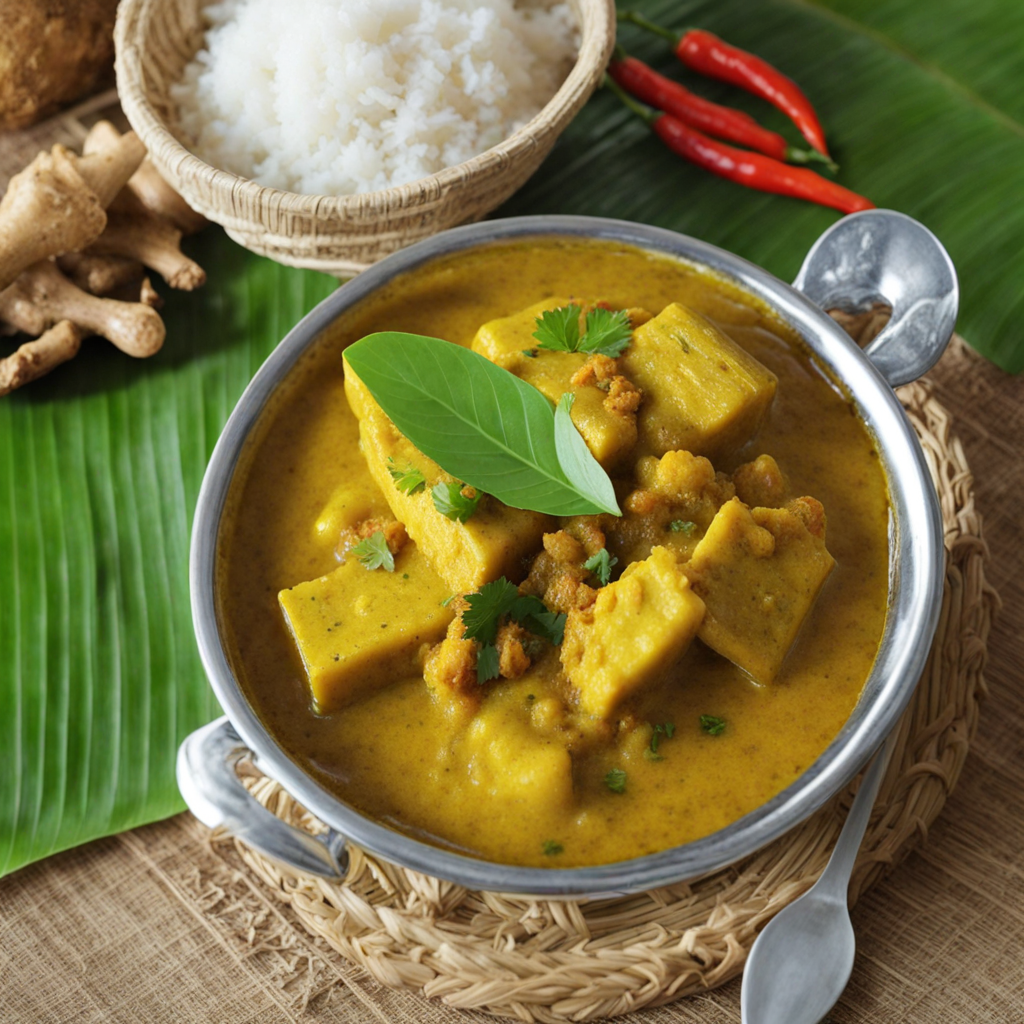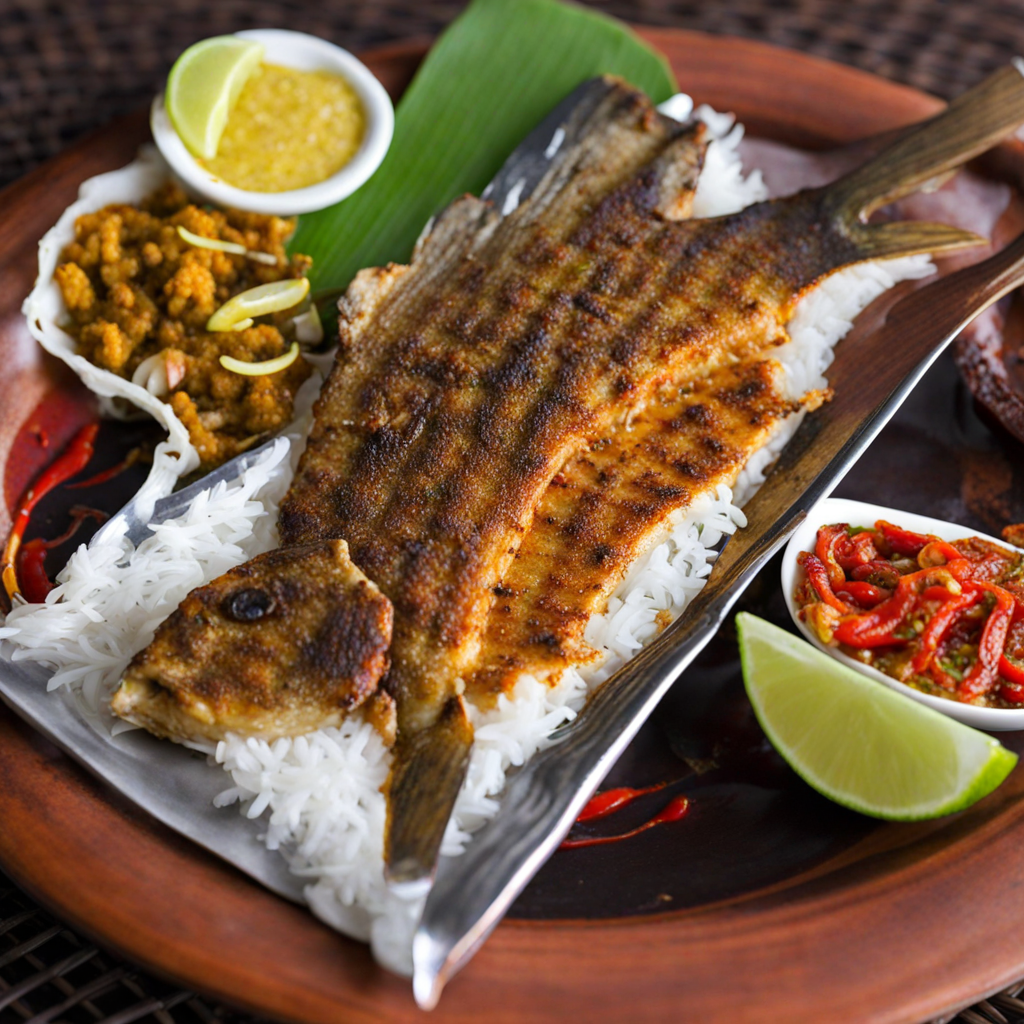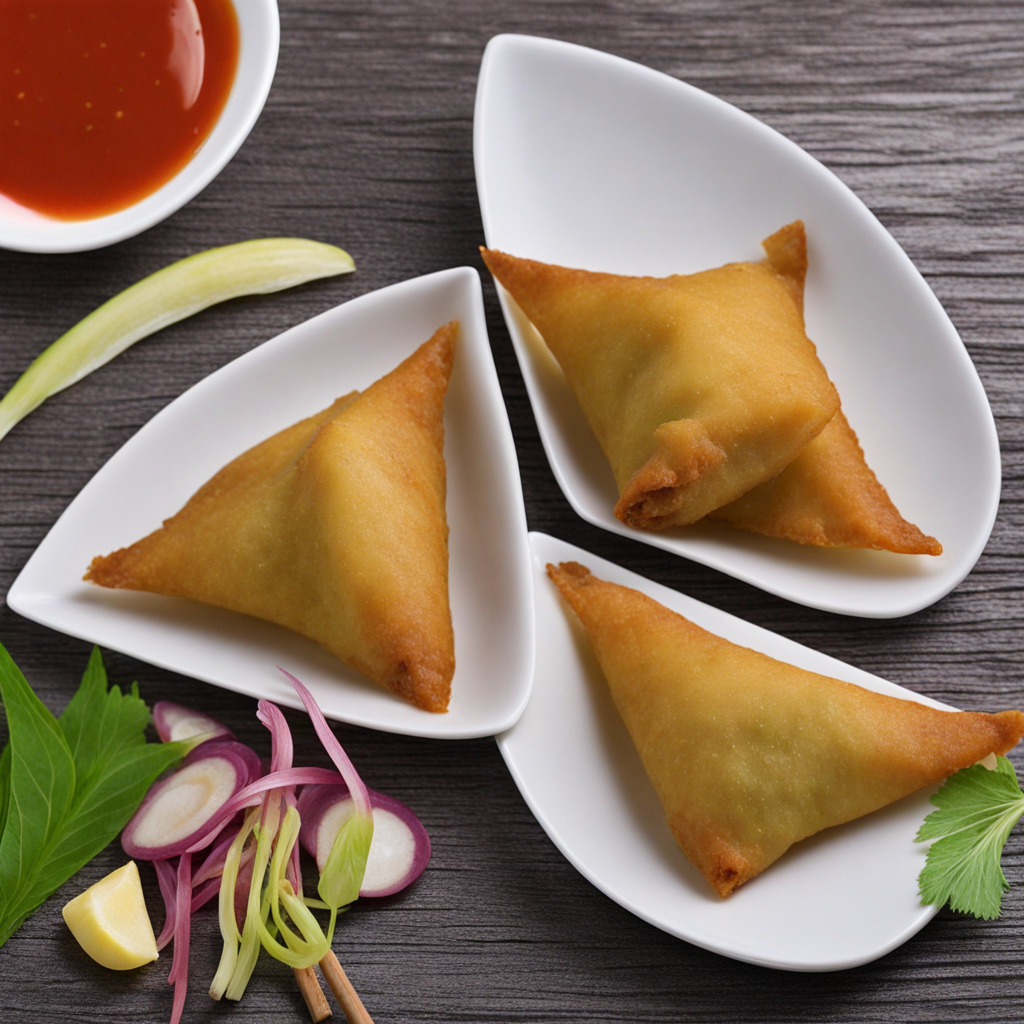Kulhi Boakibaa
Kulhi Boakibaa is a delightful Maldivian dish that beautifully embodies the rich culinary heritage of the Maldives. This savory fish cake is primarily made from tuna, a staple ingredient in Maldivian cuisine. The fish is typically flaked and mixed with a blend of spices, onions, and grated coconut, creating a harmonious balance of flavors and textures. The addition of local spices like chili, ginger, and garlic infuses the dish with a fragrant zest, making each bite an explosion of taste that reflects the vibrant essence of the islands. The preparation of Kulhi Boakibaa is an art in itself, as the mixture is often shaped into cakes and baked to perfection. The outer layer develops a crispy texture while the inside remains moist and flavorful, providing a satisfying contrast. Traditionally, it is served with a side of spicy dipping sauce, which enhances the overall experience and adds an extra kick. This dish is not only a favorite among locals but also a must-try for visitors looking to immerse themselves in authentic Maldivian flavors. Whether enjoyed as a snack, an appetizer, or part of a larger meal, Kulhi Boakibaa is a testament to the fresh seafood available in the Maldives. Its unique combination of ingredients and cooking techniques showcases the island's rich marine resources and culinary traditions. For those seeking to expand their palate, indulging in Kulhi Boakibaa promises a delightful journey into the heart of Maldivian cuisine, offering a taste that is both exotic and comforting.
How It Became This Dish
The History and Cultural Significance of ކުޅި ބޮކިބާ (Kuli Boakibaa) from the Maldives #### Introduction The Maldives, a stunning archipelago in the Indian Ocean, boasts a rich tapestry of culture, history, and culinary traditions. Among its diverse offerings, ކުޅި ބޮކިބާ (Kuli Boakibaa) stands out as a beloved traditional dish that embodies the essence of Maldivian cuisine. This dish, often enjoyed during celebrations and gatherings, reflects the islands’ history, cultural influences, and the evolution of its culinary practices. #### Origins of Kuli Boakibaa Kuli Boakibaa, translated as "coconut cake," traces its roots back to the early settlers of the Maldives. The islands were first inhabited by Dravidian and Austronesian peoples, who brought with them agricultural knowledge, fishing skills, and a wealth of culinary practices. The abundant natural resources of the islands, particularly coconuts, fish, and spices, played a significant role in the development of Maldivian cuisine. Coconut, often referred to as the “tree of life,” is integral to Maldivian food culture. The Maldivians have been resourceful in utilizing every part of the coconut palm, from the water and meat to the husk and leaves. Kuli Boakibaa is primarily made from grated coconut, rice flour, sugar, and a blend of spices, including cardamom and sometimes saffron. This combination highlights the local ingredients and the culinary creativity of the Maldivian people. #### Cultural Significance Kuli Boakibaa is not just a dessert; it holds cultural significance within Maldivian society. Traditionally served during special occasions such as weddings, Eid celebrations, and family gatherings, this dish symbolizes hospitality and generosity. The act of preparing and sharing Kuli Boakibaa reflects the close-knit community bonds and familial ties that are central to Maldivian culture. The preparation of Kuli Boakibaa is often a communal activity. Families gather to grate coconuts, mix ingredients, and steam the mixture in large banana leaves, which adds an aromatic flavor to the cake. This process fosters a sense of togetherness and reinforces community values. It is not uncommon for women to share their unique recipes and preparation methods, passing down culinary traditions from one generation to the next. Moreover, Kuli Boakibaa is often served alongside other traditional Maldivian dishes, creating a festive atmosphere during meals. Its sweetness complements the savory flavors of dishes like Mas Huni (a tuna salad) and Fihunu Mas (grilled fish), showcasing the balance of flavors that is a hallmark of Maldivian cuisine. #### Development Over Time As the Maldives has evolved, so too has Kuli Boakibaa. Historically, Maldivian cuisine was influenced by trade with various cultures, including Arab, Indian, and Sri Lankan traders. These interactions introduced new spices and cooking techniques, enriching the local culinary landscape. Kuli Boakibaa, while retaining its traditional roots, has adapted to incorporate these influences. In modern times, the dish has seen variations that cater to contemporary tastes. Chefs and home cooks alike have experimented with different flavors and textures, adding ingredients like chocolate, fruits, or nuts to create innovative twists on the classic recipe. This adaptability illustrates the dynamic nature of Maldivian cuisine, where tradition meets modernity. Furthermore, globalization has brought increased exposure to international culinary trends. As tourism in the Maldives flourished, Kuli Boakibaa gained recognition beyond the islands. Restaurants began to feature the dish on their menus, often alongside other Maldivian specialties, appealing to the diverse palates of tourists. This exposure has not only elevated the status of Kuli Boakibaa but also sparked interest in preserving traditional recipes and cooking methods. #### Ingredients and Preparation The basic ingredients of Kuli Boakibaa include: - Grated coconut (fresh or desiccated) - Rice flour - Sugar - Salt - Water - Cardamom (and sometimes saffron for added flavor) The preparation begins with grating fresh coconuts or using desiccated coconut. The grated coconut is then combined with rice flour and sugar, and spices are added to enhance the flavor. A small amount of salt balances the sweetness, and water is gradually mixed in to achieve a smooth batter consistency. Traditionally, the mixture is poured into a banana leaf-lined steamer, creating a moist and fragrant cake. The steaming process allows the flavors to meld beautifully, resulting in a soft, dense texture that is both comforting and satisfying. Once cooked, Kuli Boakibaa is cut into squares or diamond shapes and served warm or at room temperature. #### Conclusion Kuli Boakibaa is more than just a delicious dessert; it is a reflection of the Maldivian way of life, steeped in history and cultural significance. Its origins rooted in the islands’ rich agricultural practices and communal values, the dish has adapted over time while retaining its core elements. As the Maldives continues to embrace modernity without losing sight of its traditions, Kuli Boakibaa remains a symbol of heritage, identity, and the enduring spirit of Maldivian hospitality. Whether enjoyed during festive occasions or as a simple treat, Kuli Boakibaa offers a taste of the Maldives' vibrant culture and culinary legacy, inviting all to experience the warmth and richness of island life through its flavors. As the world becomes more interconnected, the appreciation for dishes like Kuli Boakibaa serves as a reminder of the importance of preserving culinary traditions and celebrating cultural diversity.
You may like
Discover local flavors from Maldives


